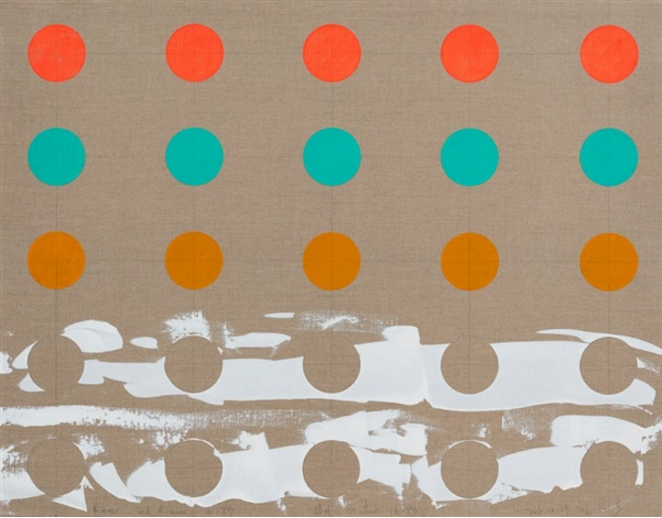
Contemporary painter Kim Young-Ik’s latest solo exhibition continues the artist’s ongoing investigation into abstraction and the legacy of Modernism, especially as it relates to the Dansaekha and Minjung Korean art movements. His latest Polka Dot series approaches a formally rigorous approach to aesthetic and rhythmic concerns through a variety of paintings created over the past year. With a career spanning over 40 years, this show serves as a reaffirmation of Young-Ik’s influence and importance in his home country of South Korea, and beyond.
His current eponymous solo show is on view at Kukje Gallery in Seoul through December 30, 2016.
When did you know you wanted to be an artist?
It was a December night in 1967. I was in my second year as a Forestry major at the College of Agriculture in Seoul National University, when I suddenly became arrested by an ambition to become an artist. I quit school the next day and prepared for the arts school admission process. I entered the College of Fine Arts at Hongik University the following year, in 1968. This is how I began the new chapter of my life as an artist.
Kim Yong-Ik, installation view. Courtesy of Kukje Gallery.
Describe your creative process.
My debut project, the Plane Object series, which I presented during my fourth year of college, was something I planned out entirely in my mind before putting it into practice. The mental image for this project was developed through internalizing information on the contemporary art of the time. My works following the Plane Object series are either small deviations or a radical severance from the overarching ideas and media from my prior bodies of work. Examples of a “radical severance” would be bundling my Plane Object works in a box or wrapping them, or my transition to public art.
On the other hand, my cardboard, medium-density fiberboard (MDF) works and “polka dot” paintings are examples of “small deviations.” My most recent body of work display acrylic polka dots arranged neatly to fit a grid on a canvas processed with a variety of materials.
Your art developed through different directions from Dansaekhwa to Minjung art, then to public art. Can you tell us about your journey getting there?
This is a rather extensive question which compels me to unravel the entire 40 years of my artistic career. I was naturally influenced by Dansaekhwa when I was under the guidance of its masters during my undergraduate and graduate education. However, soon after I discovered the limitations of Dansaekhwa art that lingered in its self-confining circuit, I felt the need to resist these masters and turned my attention to Minjung art.
And from Minjung art, which wrestles with the realities of life and society through art, I think it was only a logical, inevitable next step that I changed my focus to public art, which strives toward a city of art and art for the community. In my experience, my life as an artist of Modernist practice, seeking out art within art and endlessly agonizing over this lack of fulfillment, has consumed my being to the core, and caused significant damage to my physical and mental health. The path in art therapy I sought out ended up becoming public art, meaning art as public interest, or community-based art.
Kim Yong-Ik, Apocalypse of Modernism #13 (2016). Courtesy of Kukje Gallery.
What are you working on at the moment?
My most recent series is titled, Utopia. The title focuses on the union of two contradictory definitions, or the dichotomous nature, of the term. On one hand, utopia conveys “an ideal place” where everything has been fulfilled and provided for. On the other hand, u-topia (a spelling which highlights the Greek root words ou meaning “no” or “not” and topos meaning “place”), signifies “a place which does not really exist anywhere.” I am attempting to create work that highlights this context through a seemingly “bright and airy” canvas which, I hope, creates a “far-off sense of the void.”
Who do you most admire?
A question as candid as this makes me reflect on what it means to “admire” when I was least expecting to. My thoughts are becoming terribly disordered. I therefore declare, “I have no one. No one at all!”
The artnet Gallery Network is a community of the world’s leading galleries offering artworks by today’s most collected artists. Learn more about becoming a member here, or explore our member galleries here.